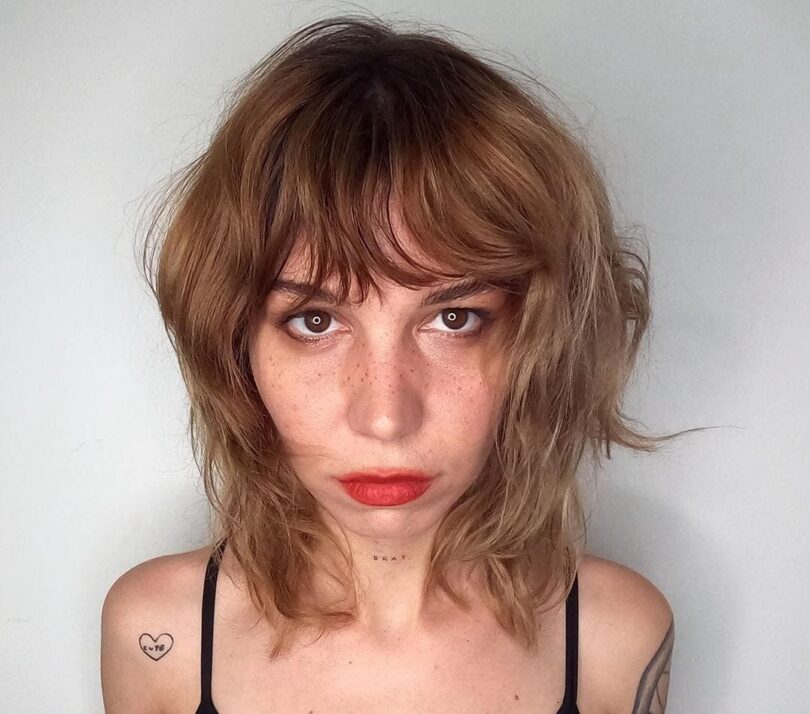Mija.
When it comes to defining an artist’s sound, there isn’t one for Mija. Her catalog cannot be categorized as one style. Amber Giles, the brainchild of Mija, creates everything from dancefloor-ready tunes to bass-forward music, elated melodies, calming tempos, experimental beats, emotional rhythms and more. Today, October 6, the genre-defying tastemaker releases her NO RULES EP, further showcasing her versatile sonic capabilities.
The four-track body of work boasts pounding, bouncy and deep basslines, samples from poets and drag queens, funky and swiveling synths, catchy toplines and a nod to ballroom culture—a late 20th-century underground queer subculture where people walk, compete, perform, dance, lip-sync and model in different categories. The producer, singer and songwriter says the title of the EP is based on her “fk a genre” ethos, which has given her the space to explore and release different styles of music throughout her illustrious career.
“I WANNA BE A BIG STAR (feat. Cakes Da Killa and Wreckno)” pays homage to “Paris Is Burning,” a 1990 documentary that chronicles ballroom culture, as well as the African-American, Latino, gay and transgender communities involved in it. Giles says it is her favorite documentary of all time because she believes it “gives an incredible insight into dance music culture, how it started with disco and [the history of] ballroom’s New York City culture.”
“I think that community deserves so much praise and respect for being some of the pioneers in the foundation of everything that we listen to and enjoy today,” the artist says. “I have a lot of drag queen friends, and I wanted to make a song for them that would amplify them and make them feel good.”
“[It’s] the most emotional song for me. It definitely makes me want to cry and rave at the same time,” she adds about “I WANNA BE A BIG STAR.”
The sound designer says it’s important for dance music fans to know the roots of the scene’s culture, noting that “we stand on the shoulders of giants” but that narrative is “one of the parts that gets left out in a lot of the stories when people talk about the history.” She says the gay community is the one she resonates with the most, and she feels empowered by it.
The EP’s “A WOMAN COMES INTO THE ROOM” features a ‘70s poem by American poet Alice Notley. Giles says she initially discovered the poem through a track by acid house duo Medicine 8, but she wasn’t able to find the record for 10 years. She recently unearthed it and decided she needed to do a “deep dive” into it. While it was difficult to locate Medicine 8, she eventually found one of its artists. He dug into his old record collection and confirmed that Notley was the poet on the song. Giles found Notley and got her permission to use her sample.
Impressively, No Rules was entirely funded by selling digital collectibles on web3 and by raising Ethereum—a truly innovative feat. The beatmaker, who is currently ranked No. 9 and was formerly rated No. 2 on the chart for top artists in web3, says she’s been selling NFTs for almost two years. Giles believes that web3 won’t be sustainable because many artists do not interact with the people buying their works, so she decided to “flip the script.” She did this by uploading her music to web3 the same way she would post her tracks on SoundCloud. In turn, she learned that there was an entire fan base on the technology side who would consistently buy her NFTs because they knew she was “going to come back” and release more.
The multi-genre maestro connects daily with her NFT buyers through a telegram chat with about 150 people. This has allowed her to become close with her community and make friends with some of them. She even met bloody white and DEEGAN through mutual friends in the web3 space, and both artists are featured on the EP. Giles says they are “smaller” acts on NO RULES but there are also “legends” on it, such as Cakes Da Killa and Wreckno.
Her web3 work has not only allowed her to make new connections but it has also proven to be profitable. Giles makes royalties on this secondary market, noting that it can be of big financial gain if one is consistent with it. She defines it as a “long-term game.” She has seen remarkable success through selling her NFTs as it has funded everything as far as marketing, recording feature costs, touring and more. The producer has the power to sell her NFTs and raise an abundance of Ethereum because she’s been an independent artist throughout the majority of her career, giving her the rights to retail her catalog.
“I started [raving] so young. I was like 15,” Mija says. “When I went to my first rave, I was a full … [+]
The heavyweight champion of genre-less music says the biggest advantages of being an independent artist are putting out music whenever and with whoever she wants, not having middlemen in her release process, not having people trying to guide where her art goes and not having her albums scrapped. Giles believes music makers should have autonomy over their own creativity. However, she does see the benefits of working with labels, which she does with smaller projects. An example of this is when she dropped “Groove” on LP Giobbi’s Femme House imprint. The label provided her with a non-exclusive deal for the song, which was published on the LP Giobbi x Insomniac Records Presents Femme House compilation.
“I want to collaborate with other artists, with other labels and [with] communities,” Giles says. “I want to be able to do that, but I don’t ever want to do it exclusively. When you’re able to do a non-exclusive, it’s cool [because] we can work together in a few years if I want to remix this or do something.”
Giles believes that her purpose in life is to “make people feel good, make people feel seen and make them feel like they can express themselves without being judged.” She tries to emulate this through her deejaying, noting that she feels in control of those spaces when performing. She adds that by giving off that energy in her sets, people reciprocate that vibe back and it fills the room.
The genre-bending maven says her sound is less “curated or anticipated” as it’s based on different phases she has gone through in her life. Giles says it’s cyclical and that each time she returns to a style, she has more knowledge from when she previously produced it. This allows her to become better at making those tunes by evolving her sound design. Her “fk a genre” concept began when she was 23 years old because she wanted to learn as much as possible. This ideology has certainly empowered her to transcend stylistic borders throughout her growth as an artist.
“What looks like I’m chaotic and doing all sorts of things at the same time…I kind of am,” Giles says. “I feel like now, for the first time, I am actually honing in on my sound and figuring out what it sounds like instead of [making] a million random different things. It is starting to feel more cohesive. So I’m not sure if it’s really intentional, but in the beginning, it was because I didn’t know what I wanted to do yet and I wasn’t sure where I stood.”








